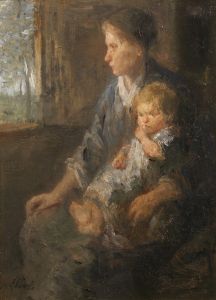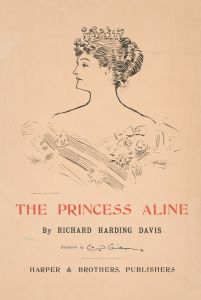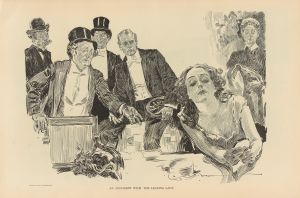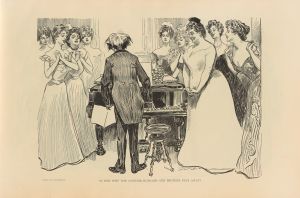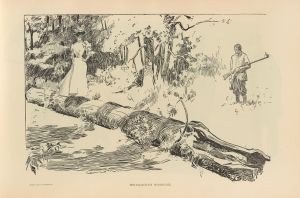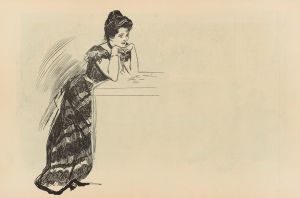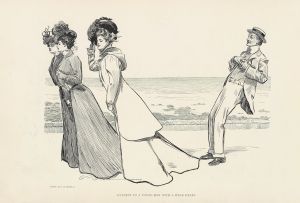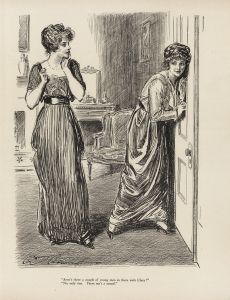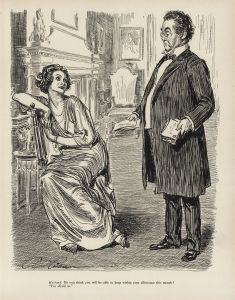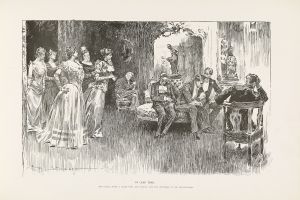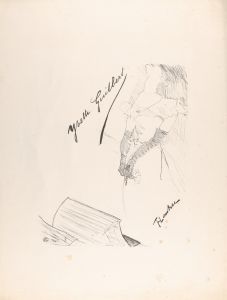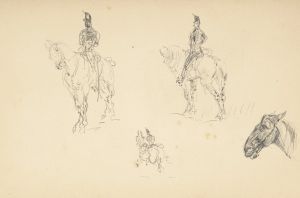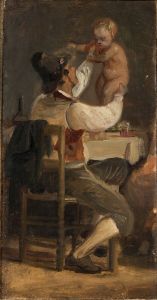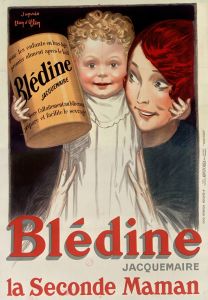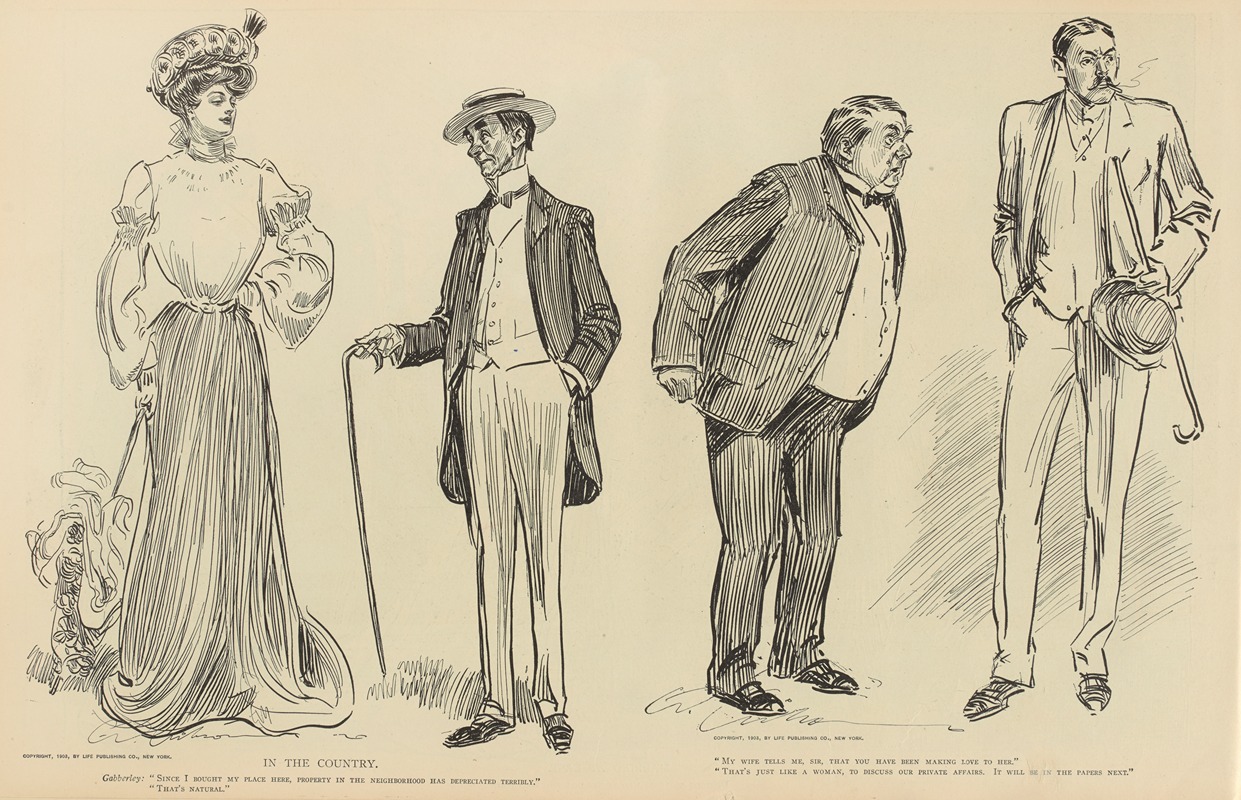
In the country
A hand-painted replica of Charles Dana Gibson’s masterpiece In the country, meticulously crafted by professional artists to capture the true essence of the original. Each piece is created with museum-quality canvas and rare mineral pigments, carefully painted by experienced artists with delicate brushstrokes and rich, layered colors to perfectly recreate the texture of the original artwork. Unlike machine-printed reproductions, this hand-painted version brings the painting to life, infused with the artist’s emotions and skill in every stroke. Whether for personal collection or home decoration, it instantly elevates the artistic atmosphere of any space.
Charles Dana Gibson was a prominent American illustrator best known for his creation of the "Gibson Girl," an iconic representation of the American woman at the turn of the 20th century. One of his works, "In the Country," exemplifies his artistic style and thematic focus. However, specific details about the artwork "In the Country" are limited, and much of Gibson's work is often discussed in the broader context of his contributions to illustration and American culture.
Gibson was born on September 14, 1867, in Roxbury, Massachusetts, and he developed an early interest in art. He studied at the Art Students League in New York City, where he honed his skills in drawing and illustration. Gibson's career took off in the 1890s when his illustrations began appearing in popular magazines such as Life, Harper's Weekly, and Scribner's. His work was characterized by its detailed pen-and-ink drawings, which captured the elegance and sophistication of the era.
The "Gibson Girl" became Gibson's most famous creation, symbolizing the idealized American woman of the late 19th and early 20th centuries. She was depicted as independent, confident, and fashionable, often shown in various social settings. The Gibson Girl was not just a reflection of contemporary fashion but also an embodiment of the changing roles of women in society during that period.
"In the Country" likely fits within this broader context of Gibson's work, capturing scenes of leisure and the genteel lifestyle associated with the upper-middle class of the time. While specific details about the composition and themes of "In the Country" are not extensively documented, it can be inferred that the artwork would reflect Gibson's typical style—elegant, detailed, and focused on the social dynamics of the era.
Gibson's illustrations were not just artistic expressions but also social commentaries. They often depicted the interactions between men and women, highlighting the complexities of relationships and societal expectations. His work resonated with the public, and the Gibson Girl became a cultural phenomenon, influencing fashion, advertising, and even the feminist movement.
Throughout his career, Gibson's illustrations were celebrated for their technical skill and their ability to capture the spirit of the age. He continued to work as an illustrator until the 1930s, and his influence persisted long after his retirement. Charles Dana Gibson passed away on December 23, 1944, but his legacy as one of America's foremost illustrators endures.
In summary, while specific information about "In the Country" is scarce, it is representative of Charles Dana Gibson's broader body of work, which played a significant role in shaping American visual culture at the turn of the century. His illustrations remain a testament to his artistic talent and his keen observation of the social trends of his time.





